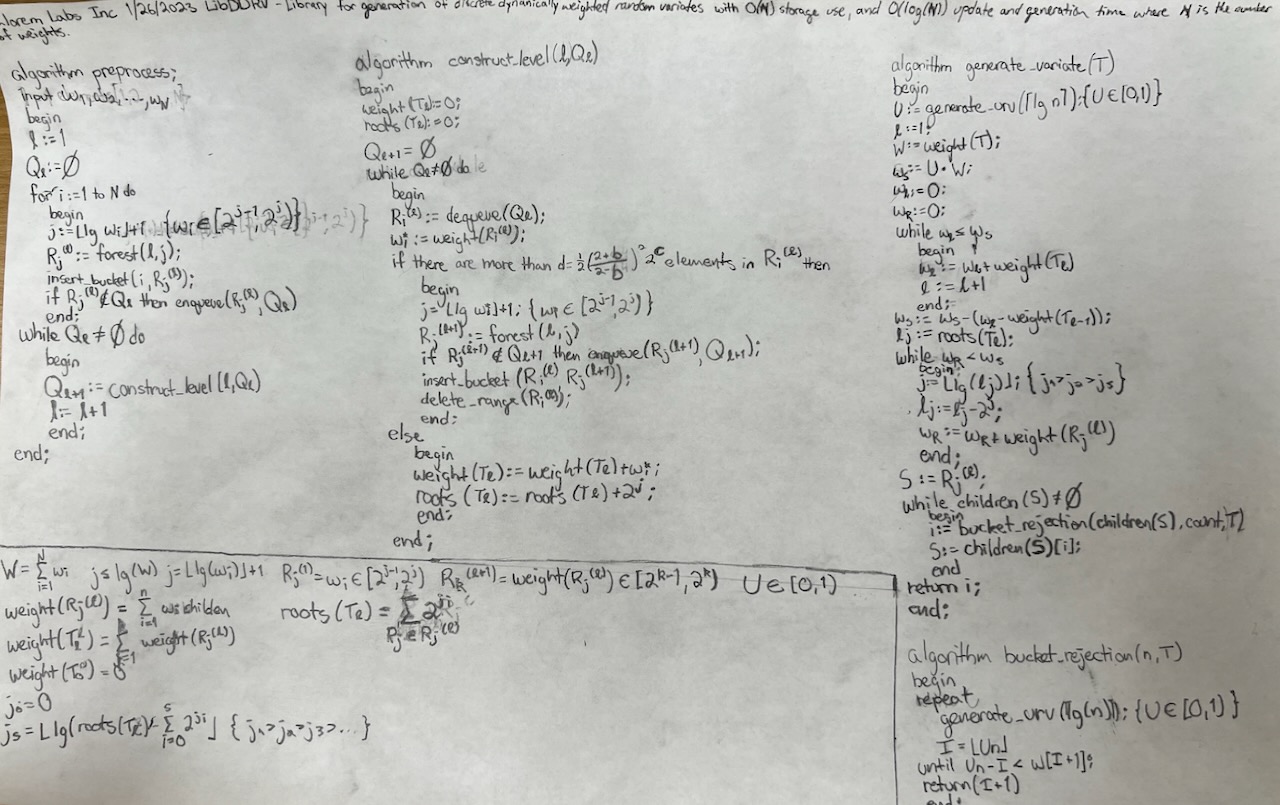In late February, Valorem was deep in an audit of Valorem Clear with Zellic, while simultaneously preparing for the ETH Denver 2023 Hackathon. During our audit, one issue regarding the fairness of our option exercise assignment algorithm emerged as a challenging problem. We managed to get launch-ready by making the algorithm deterministic, ensuring fair play for both players, writer and exerciser, involved in the option. Yet, we were convinced we could enhance it further.
Ahead of the hackathon, we delved into a more comprehensive solution. It became clear that we needed a mechanism for generating random variates fitting a dynamically weighted discrete probability mass function (PMF). We aimed to leverage this unique type of random number to equalize the probability of option exercise assignment across various buckets.
A random forest in Solidity
A simple implementation of dynamic PMF random variate generation could be easily implemented but, unfortunately, runs in linear time, making it unsuitable for the Ethereum Virtual Machine (EVM). Our research led us to a 1993 research paper by Matias, Vitter, and Ni, referenced in Knuth’s The Art of Computer Programming. This paper proposed an innovative approach that operates in log n time, using a forest of trees data structure, and takes a uniform random variate (URV) as input. This URV can be sourced from a reliable oracle like Chainlink VRF, a randomness beacon like RANDAO, or a pseudorandom source like a collaborative entropy queue.

This research was the basis for our new randomness library for the Solidity ecosystem, LibDDRV. The library enables the generation of random variates conforming to a dynamically weighted discrete PMF. It required considerable effort in the Metaverse, as well as with traditional pen and paper, to devise pseudocode that would later be transformed into Solidity. Our generator thrives in the dynamic case, facilitating weight updates and generating random variates efficiently.

With the library still under development going into the hackathon, we sought on-chain games that could benefit from it. Our decision was to continue with the library implementation while competing in the hackathon gaming track. After some consideration, we realized we could utilize the library to construct a European no-hole-card blackjack game without zero-knowledge proofs.
A blackjack shoe in Solidity
Historically, static methods such as Walker’s Alias Method have been employed to generate random variates with a constant set of weights. However, these methods are inadequate in a dynamic context like a Blackjack game, where the odds of drawing a specific card change with every dealt card. Blackjack is a game of chance, but it’s also a game of skill. The skill comes in understanding the probabilities of the game, and how they dynamically change based on the cards which have already been drawn. This translates almost perfectly into a dynamically weighted discrete probability mass function (PMF).
Thus, we integrated LibDDRV into a Solidity smart contract for a game of EVM Blackjack, which implements game rules and provides players with the ability to place bets, receive cards, hit, or stand. Along with a user interface so that users could play the game. All of this was a bit ambitious for a hackathon, but we did get pretty far along, particularly with the library.
Doubling-down: A dynamic future
The hackathon was a whirlwind of coding and innovation, and we have much more to explore. The ability to generate dynamic random variates could greatly improve blockchain-based prediction markets or gaming scenarios where each event influences the odds of subsequent events. Potential applications range from NFTs, GameFi, DeFi, and DAOs to more technical uses like fuzz testing inputs for real-world scenario modeling and consensus algorithms.
Wrapping up
ETH Denver 2023 served as a fantastic platform to connect theoretical probability concepts with their practical on-chain implementations. Our journey continues as we strive to refine our implementation, contributing to the evolving landscape of randomness in the EVM ecosystem, and beyond.
What other on-chain problems could LibDDRV solve? 🤔
Credit to Neodaoist, Nick Adamson, Flip, and 0xAlcibiades for their contributions during the hackathon.